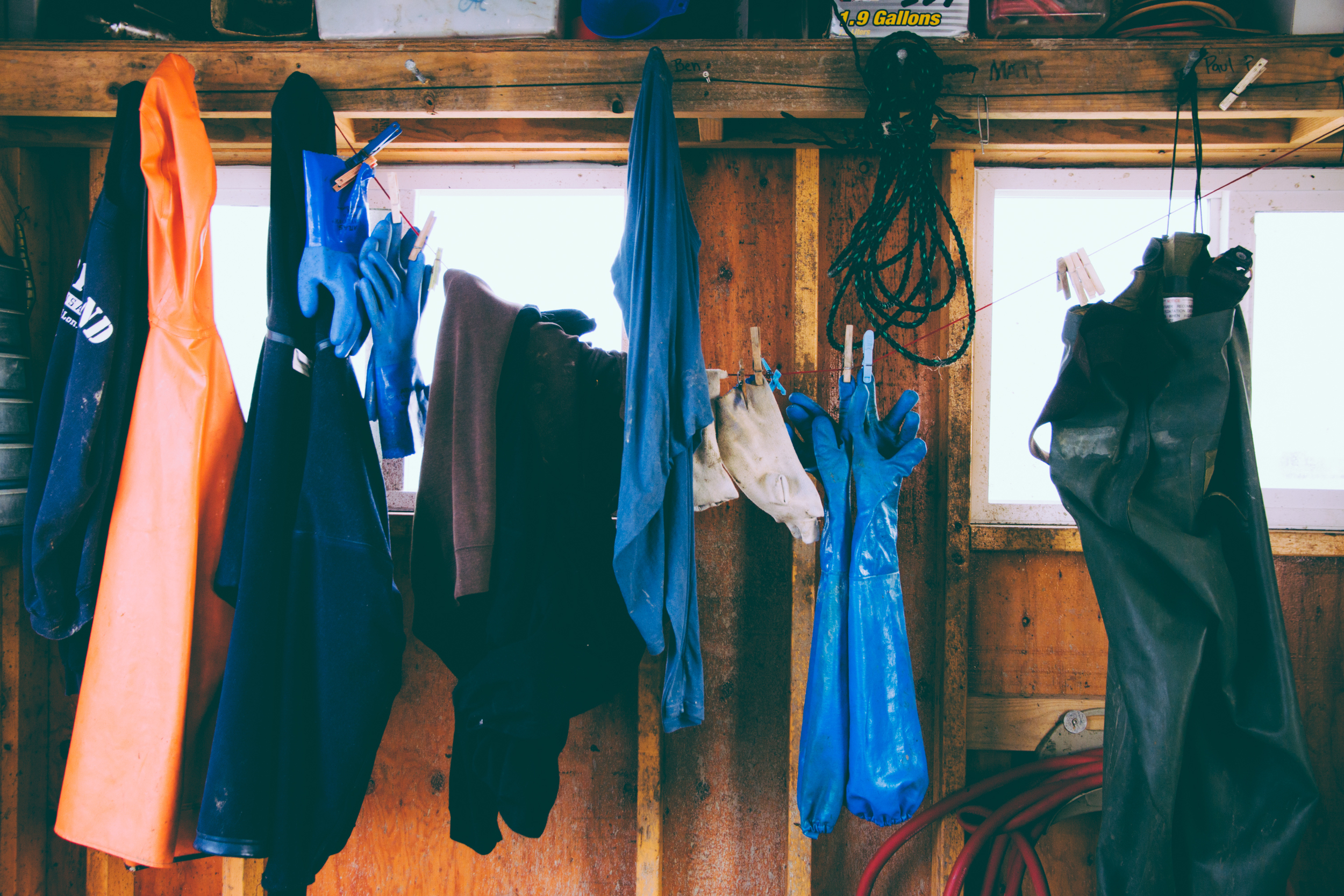
Welcome to the Standish Shore Oyster Farm
Growing oysters is not an easy or sure thing. There is no "sure" thing when it comes to farming especially dealing with weather. It's a lot of fun and extremely rewarding, but also a lot of back-breaking work. Scroll through to learn how we grow our oysters on the Standish Shore Oyster Farm.

Receiving the Seed
It's always an exciting day when the seed arrives! Each May, we buy approximately 2.5 million oyster seed. They are graded at 2mm in size, packed in cheesecloth bags, and shipped overnight to Duxbury. At this stage, a million oysters weigh about 4 pounds, which is the same weight as 24 market-sized oysters.

First Drink
Once we receive the seed, the baby oysters get their first drink of cool Duxbury Bay water in our upweller, a nursery system under our float that is run by a small generator. This system forces a constant supply of phytoplankton-rich water through each silo (the white boxes) to "force-feed" the oysters. This is a crucial stage in the growing process. We tend to the upweller twice a day to make sure the flow is right and the screens are clean. If everything goes as planned, the oysters should double in volume every few days.
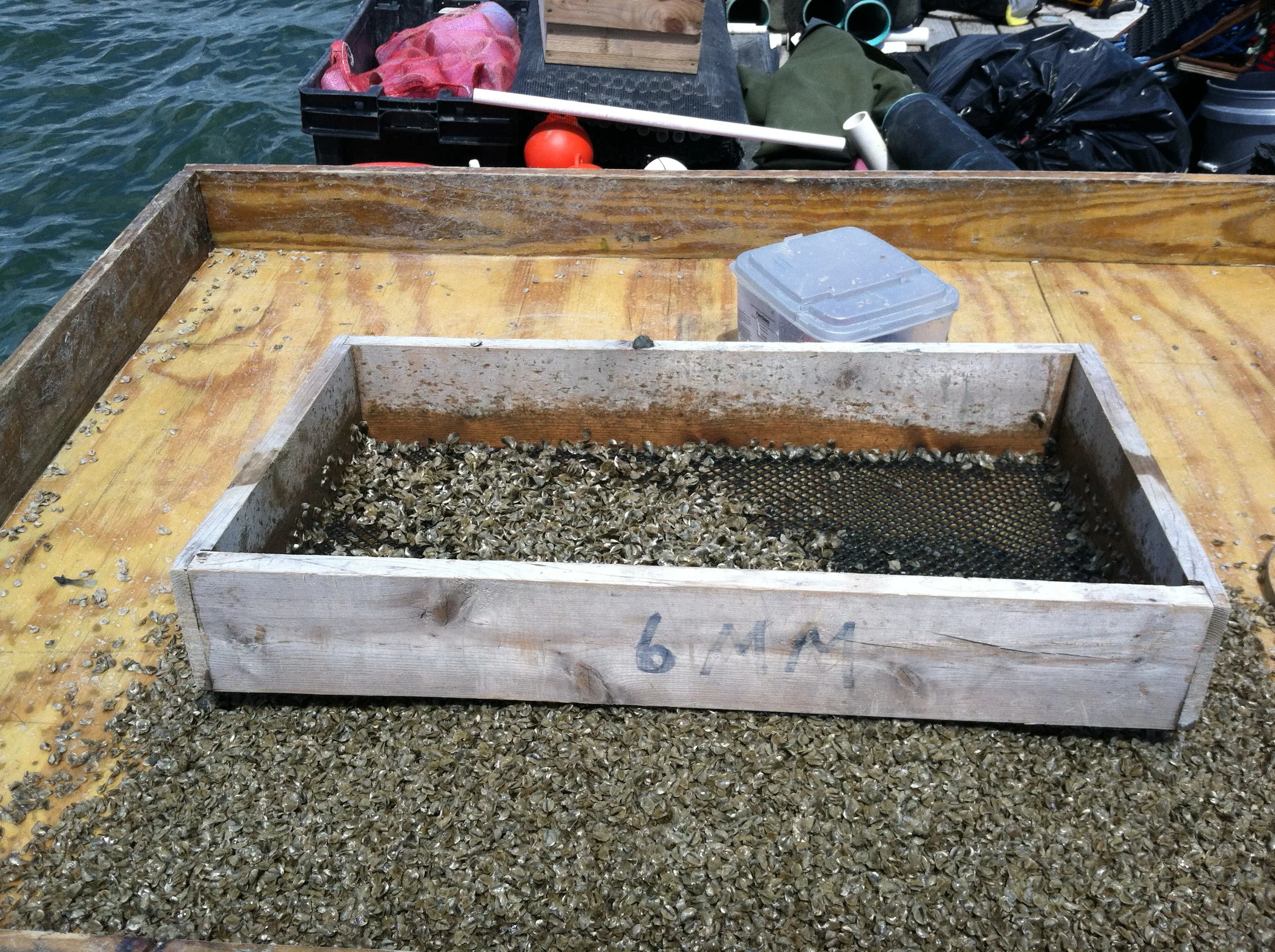
First Grading
When the oysters reach 6mm in size (1/4") we start grading them by hand. We sieve the oysters and place the larger, retained oysters in 4mm nursery bags. The nursery bags go out into cages, which rest on the ocean bottom. This process continues for 6-8 weeks until the upweller is empty of seed.

Tending the Seed
We put a lot of care into our oysters and tend to them regularly. The bags are flipped, brushed clean, and rotated weekly to keep the bags clean and the oysters growing uniformly.

More Tending
The care continues as we try to keep the bags clean so that water and food can flow through in good volume. Late summer and early fall produces a lot of fouling on the bags. Flipping, rotating, and brushing the bags help to keep the growth of these fouling organisms at bay.

Longlining
Once November hits, it’s a mad rush to get our oysters out of the cages before winter. At this point the oysters are 1.5 to 2.5 inches in length. We longline the bags to the bottom so the oysters can spend the winter in this protected environment. They go dormant in the winter and stop growing and feeding. All of our empty cages come back out of the water. This is one of the most backbreaking tasks of the year! We check on the bags every few weeks to make sure our knots are holding and there is no ice damage.

Second Growing Season
In late March to early April, our oyster seed will start pumping again. Once we see them start to put on some new shell, we move all 1,500+ bags back into cages, which all had to be brought back out of storage and into the water.

Bottom Planting
Once new growth really starts to show in late April or early May, we tumble them one last time, and then spread them loose on the bottom by hand. It's labor intensive, but an extremely rewarding part of the job!

Growout
The Standish seed matures and thickens its shell during the next 6 months on the bottom. If all goes well, we start harvesting this crop in the middle of October.
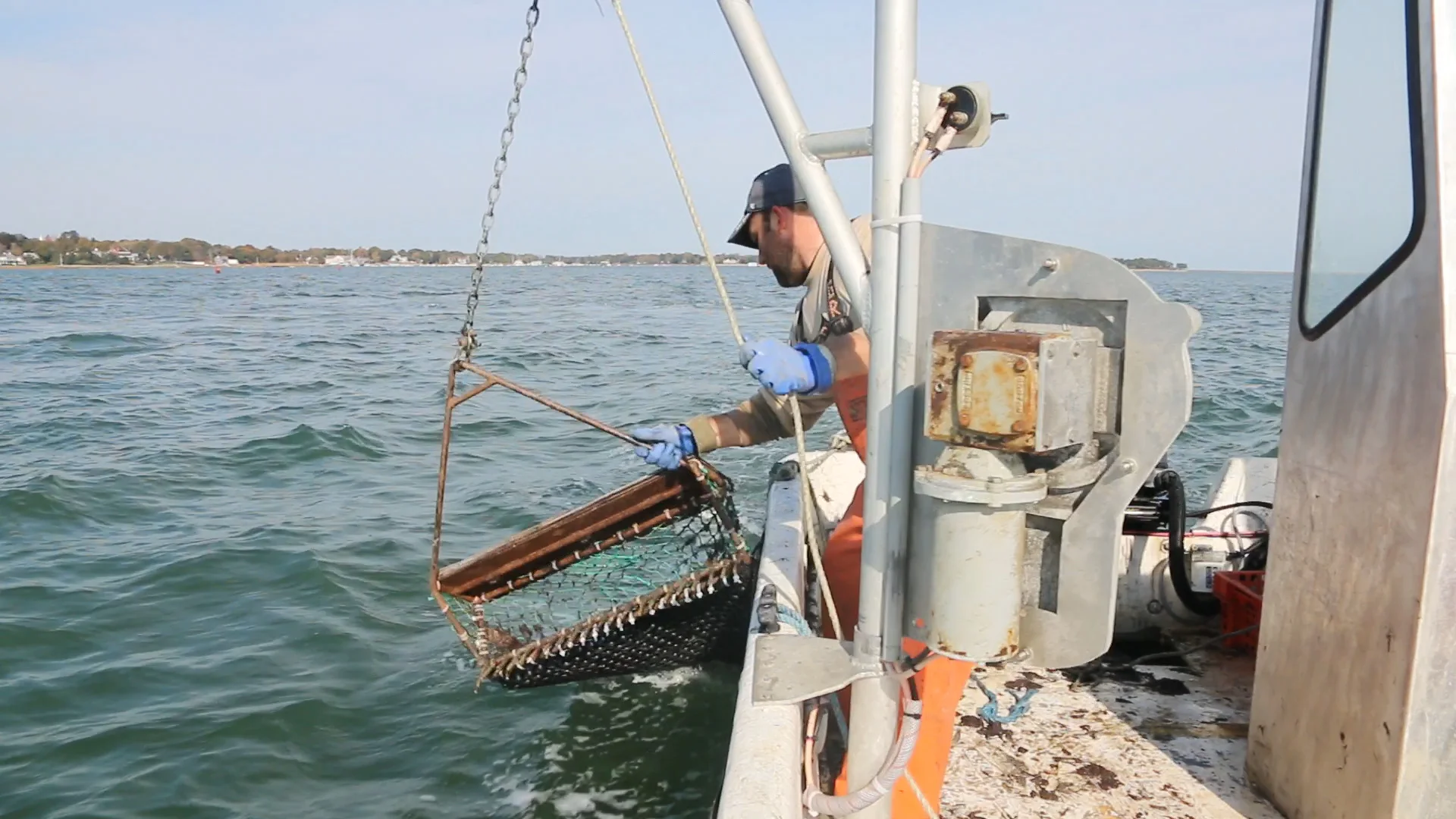
Harvest
Around October 15th we start to harvest. We drag our dredge slowly over the bottom while driving our boats in circles. The oysters are collected in the bag, and dropped into baskets to be culled (cleaned and sorted by size).

Hand-Picking
We also hand-pick on big drainer tides, which is Ben’s favorite part of the process. It’s like playing in the mud for a living!
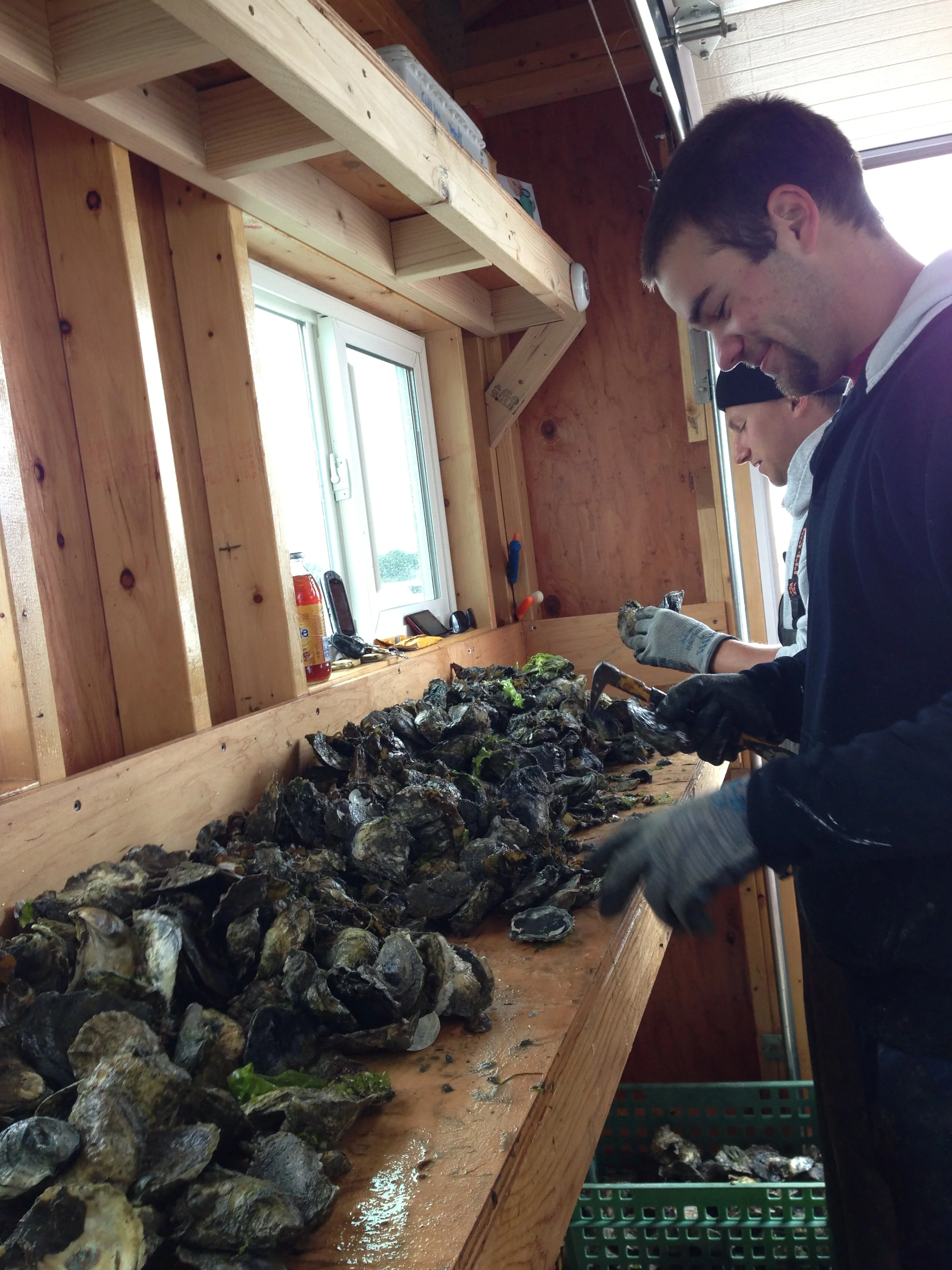
Culling
This is the sorting process where we separate the different sizes and grades of our oysters. This is one of the most important and time-consuming steps. Taking our time with this step ensures our Standish Shore Oysters are what customers expect: great quality and super fresh!
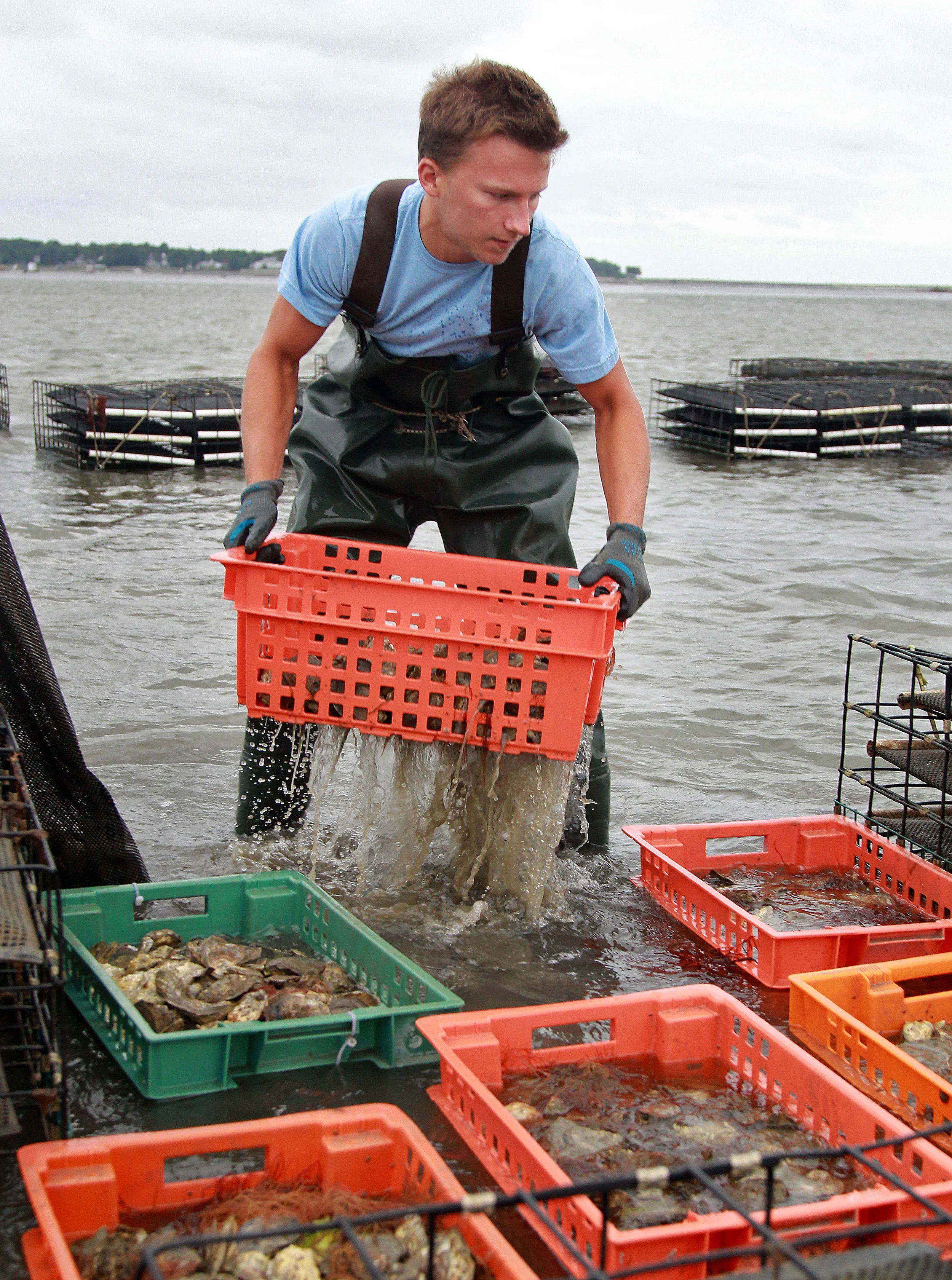
Soaking
We separate the market product in 100 count bags or crates and return it to the farm to purge. After a few days they are ready for final harvest!

The Final Product
Once they are bagged, they arrive at the Pangea shop, ready to be sold, shipped and enjoyed across North America!















